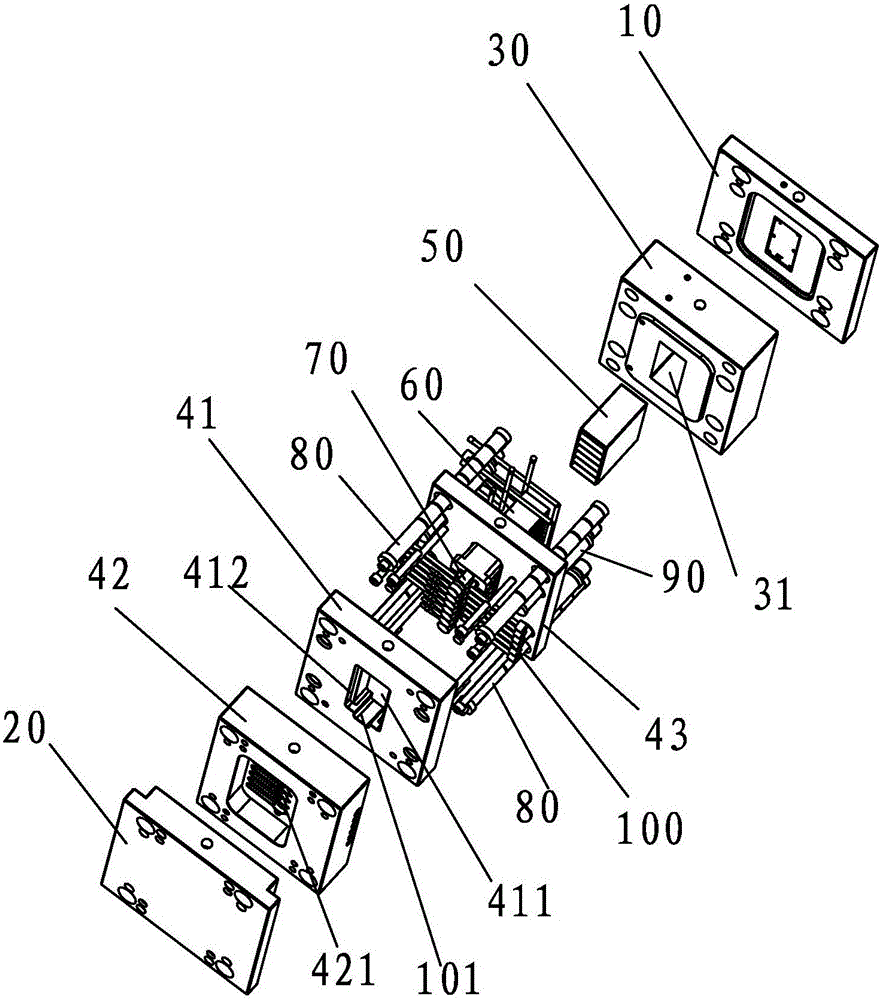 CN
CN info@seacomould.com
info@seacomould.com +86-18969612882
+86-18969612882
Key points of plastic mold design
2019-12-13
Plastic mold design is based on correct plastic product design. Mold design and manufacturing are closely related to plastic processing. The success or failure of plastic processing largely depends on the mold design effect and mold manufacturing quality.The structural elements that need to be considered in plastic mold design are:
1. Parting surface, that is, the contact surface of the concave mold and the convex mold when the mold is closed. The choice of its location and form is affected by factors such as product shape and appearance, wall thickness, molding method, post-processing technology, mold type and structure, demolding method, and molding machine structure.
2. Structural parts, that is, sliders, inclined tops, and straight top blocks of complex molds. The design of structural parts is very critical, which is related to the life of the mold, processing cycle, cost, product quality, etc. Therefore, designing the core structure of a complex mold has higher requirements on the designer's comprehensive ability. Design.
Mold structure design
The size of the plastic parts is small, and the accuracy level of the products is low. It requires good performance, no cracks, bending resistance, and large-scale production. The mold is designed as a one-mold, eight-cavity structure, and solves the following problems
First, the balance of the pouring system. Multi-cavity molds are designed to allow all cavities to be fed at the same time as much as possible. Due to the increase in the number of cavities, the length of the runner must be increased. Before the melt reaches the cavity, the injection pressure There will be a large loss of the heat of the melt. If the shunt channel design is slightly unreasonable, plastic parts may be defective, such as one-cavity or several-cavity dissatisfaction, or live full, but there are problems such as poor welding or internal organization. Looseness and other defects, such as raising the injection pressure, are prone to flash. The design of the shunts in the paper uses an unbalanced arrangement. By setting the size of the gate and the shunts, the injection process is adjusted to the value to ensure that the cavity shrinkage is consistent. The most precise plastic parts are required to ensure their mutual interaction. In other words, the position of the gate is set at the thick end of the plastic part as the Y end, which is conducive to flow and shrinkage. It can also avoid welding marks, and the molecules have the orientation to meet the requirements of bending without breaking.
Second, the design of the cooling system The design principle of the cooling device is to design the cooling device without increasing the structure of the mold itself. On the premise that the transmission area required for cooling and the mold structure allow, the number of cooling circuits is as much as possible. Multiple designs, and the cooling channel diameter is as large as possible. Cooling water holes are processed on the upper and lower cavity plates and the movable fixed template. The cooling water holes of the upper cavity plate are connected with the water holes of the fixed template during installation, and then sealed with a sealing ring. The cooling water holes of the lower cavity plate are connected with the water holes of the movable template, and they are also sealed by a seal ring. The water holes are arranged on the upper and lower cavity plates and the movable fixed template.


Related Products
Latest Updated
- China automotive mold manufacturing is facing the development trend of 2025
- The major development trend of automotive mould technology
- How to find a good automotive mould supplier and manufacturer in China
- How to make the injection plastic mould gate design
- The most likely defects in the mold injection molding process
- Injection mold repair steps and precautions
- Auto mould making-automould injection moulding company
- How to choose plastic mould supplier in Taizhou China
Relative Articles
- How to make the injection plastic mould gate design
- What should you pay attention to when designing injection molds
- Corner treatment of mold parting surface for automotive mold design
- Why does the bumper mold adopt the internal fractal structure design
- Key points for new plastic mold test
- Design and development of medical equipment and product molds
- Design of Multi-cavity Injection Bottle Cap Mould
- Considerations for the design of plastic bottle cap moulds
- Structural design of beverage bottle cap mold
- Leak-proof design of bottle cap mould
Hot Articles
- Mold plating chrome treatment technology is good for mold life
- Analysis of the causes of the fusion line of plastic mold products and corresponding improvement measures
- what are the common problem in the plastic mould injection process
- Leak-proof design of bottle cap mould
- What performance requirements should be met when selecting steel for injection mold
- When Huangyan Mold factory come back to work after coronavirus
- Coronavirus China Wuhan
- How to check the test of the injection mould
- How to choose plastic mould supplier in Taizhou China
- What principles should be followed in the design and development of bumpers mould
- Bottle cap mold manufacturing process
- Six standards for testing the quality of antifreeze bucket mould
Hot tags: china mold maker,taizhou,huangyan, suppliers, manufacturers, factory, maker,customized







